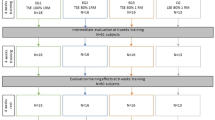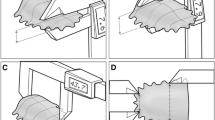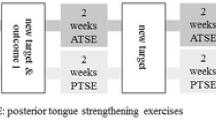Abstract
Disease-related atrophy of the tongue muscles can lead to diminished lingual strength and swallowing difficulties. The devastating physical and social consequences resulting from this condition of oropharyngeal dysphagia have prompted investigators to study the effects of tongue exercise in improving lingual strength. We developed the Madison Oral Strengthening Therapeutic (MOST) device, which provides replicable mouth placement, portability, affordability, and a simple user interface. Our study (1) compared the MOST to the Iowa Oral Performance Instrument (IOPI), a commercial pressure-measuring device, and (2) identified the optimal tongue pressure sampling rate for isometric exercises. While initial use of the MOST is focused on evaluating and treating swallowing problems, it is anticipated that its greatest impact will be the prevention of lingual muscle mass and related strength diminishment, which occurs even in the exponentially increasing population of healthy aging adults.








Similar content being viewed by others
References
Robbins J, Barczi SR: Disorders of swallowing. In: Hazzard WR, Blass JP, Halter JB (eds.): Principles of Geriatric Medicine and Gerontology, 5th ed. New York: McGraw-Hill, Inc, 2003, pp 1193–1212
Trupe EH, Siebens H, Siebens A: Prevalence of feeding and swallowing disorders in a nursing home. Arch Phys Med Rehabil 65:651–652, 1984
Robbins J, Levine R, Wood J, Roecker E, Luschei E: Age effects on lingual pressure generation as a risk factor for dysphagia. J Gerontol Med Sci 50:M257–M262, 1995
Evans WJ: What is sarcopenia? J Gerontol 50A:5–8, 1995
Lazarus C, Logemann J, Huang C, Rademaker A: Effects of two types of tongue strengthening exercises in young normals. Fol Phoniatr Logop 55:199–205, 2003
Kays SA, Robbins J, Hind JA, Hewitt A, Gangnon R: Effects of lingual exercise on swallowing-related outcomes after stroke. Poster presented at the American Speech Language Hearing Association annual convention. Philadelphia, PA, 18–20, 2004
Robbins J, Kays SA, Gangnon R, Hind J, Hewitt A, Gentry LR, Taylor AJ: The effects of lingual exercise in stroke patients with dysphagia. Arch Phys Med Rehabil 88(2):150–158, 2007
Robinovitch SN, Hershler C, Romilly DP: A tongue force measurement system for the assessment of oral-phase swallowing disorders. Arch Phys Med Rehabil 72:38–42, 1991
Barlow S, Abbs J: Force transducers for the evaluation of labial, lingual and mandibular motor impairments. J Speech Hear Res 26:616–621, 1983
Crow HC, Ship JA: Tongue strength and endurance in different aged individuals. J Gerontol 51A:M247–M250, 1996
Lazarus C, Logemann J, Pauloski BR, Rademaker AW, Larson CR, Mittal BB, Pierce M: Swallowing and tongue function following treatment for oral and oropharyngeal cancer. J Speech Lang Hear Res 43:1011–1023, 2000
Nicosia MA, Hind JA, Roecker EB, Carnes M, Robbins JA: Age effects on the temporal evolution of isometric and swallowing pressure. J Gerontol Med Sci 55A:M634–M640, 2000
Kay Elemetrics Corp.: Digital Swallowing Workstation Model 7200 Instruction Manual. Lincoln Park, NJ: Kay Elemetrics, 2002
Robbins J, Gangnon R, Theis S, Kays SA, Hind J: The effects of lingual exercise on swallowing in older adults. J Am Geriatr Soc 53:1483–1489, 2005
Acknowledgments
The authors thank the following engineering consultants: Dr. John Webster, Department of Biomedical Engineering, University of Wisconsin-Madison; Mitchell Tyler, Department of Biomedical Engineering, University of Wisconsin-Madison; and the following original inventors: Elan Bomstzyck, Angela Hewitt, Christine Koranda, Aaron Kroner, Jon Kuchenreuther, David Meister, JoAnne Robbins, and Bryan Staerkel.
Author information
Authors and Affiliations
Corresponding author
Additional information
This work was supported by the University of Wisconsin Madison Hilldale Undergraduate Research Fellowship. This is GRECC manuscript No. 2005-01.
Rights and permissions
About this article
Cite this article
Hewitt, A., Hind, J., Kays, S. et al. Standardized Instrument for Lingual Pressure Measurement. Dysphagia 23, 16–25 (2008). https://doi.org/10.1007/s00455-007-9089-0
Published:
Issue Date:
DOI: https://doi.org/10.1007/s00455-007-9089-0




